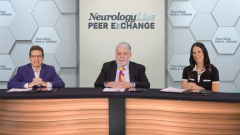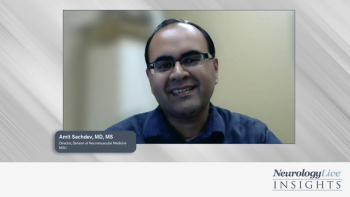
Current Standard of Care for Myasthenia Gravis
Panelists discuss how current treatment follows a stepwise approach starting with symptomatic therapy (pyridostigmine) and progressing to immunosuppressive agents (steroids and nonsteroidal immunosuppressants), with thymectomy for select patients and consideration of targeted therapies for refractory cases.
Episodes in this series

Current myasthenia gravis treatment follows a conventional stepwise approach utilizing evidence-based therapies tailored to disease severity, antibody status, and patient-specific factors. Initial management typically begins with symptomatic therapy using acetylcholinesterase inhibitors such as pyridostigmine (Mestinon), followed by immunosuppressive interventions when symptom control proves inadequate. The treatment paradigm progresses from symptomatic management through immunosuppression to rapid interventions such as plasma exchange or IVIG for crisis management, with thymectomy considered for specific patient populations.
Conventional immunosuppressive therapy relies primarily on corticosteroids as first-line agents, followed by nonsteroidal immunosuppressants for broader immune system modulation. Although pyridostigmine provides rapid symptomatic relief and excellent safety profiles, it fails to address underlying autoimmune pathophysiology, offering no protection against disease progression or crisis development. The historical use of pyridostigmine reflects earlier understanding of myasthenia gravis before recognition of its autoimmune nature, though some patients demonstrate robust responses that may justify continued use.
The treatment landscape increasingly emphasizes precision medicine approaches utilizing targeted therapies for refractory disease, though current guidelines from 2016-2020 predate many novel therapeutic options. Treatment selection considers multiple factors including muscle groups involved, antibody subtypes, patient age, comorbidities, and thymoma presence. The shift toward targeted therapies represents movement from broad immunosuppression toward more specific interventions, though integration with conventional approaches remains essential for optimal outcomes. Updated guidelines currently under development will likely incorporate these newer therapeutic options into standardized treatment algorithms.
Newsletter
Keep your finger on the pulse of neurology—subscribe to NeurologyLive for expert interviews, new data, and breakthrough treatment updates.




































